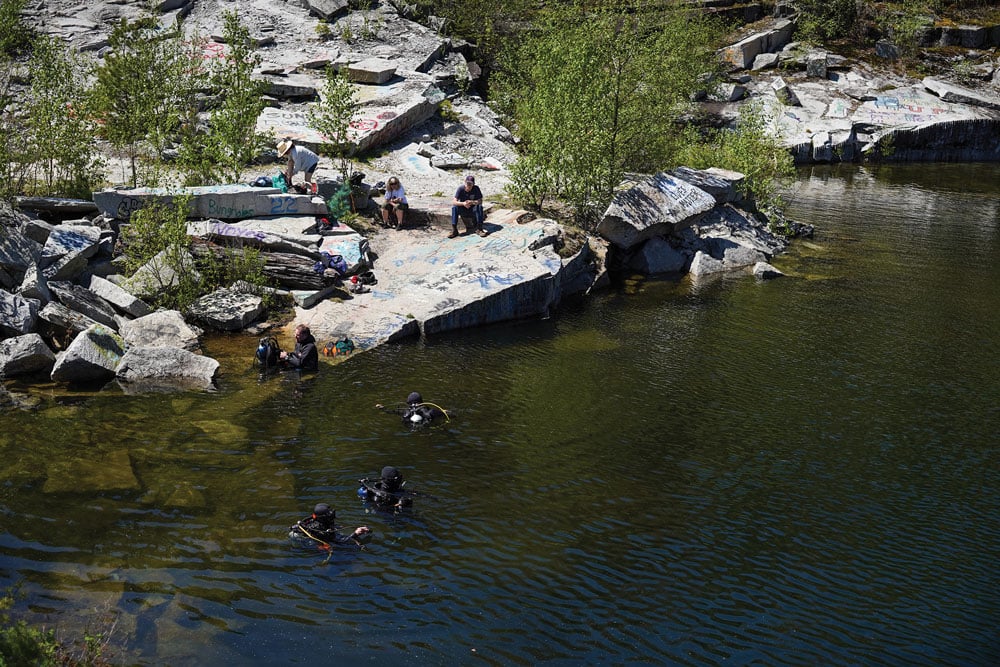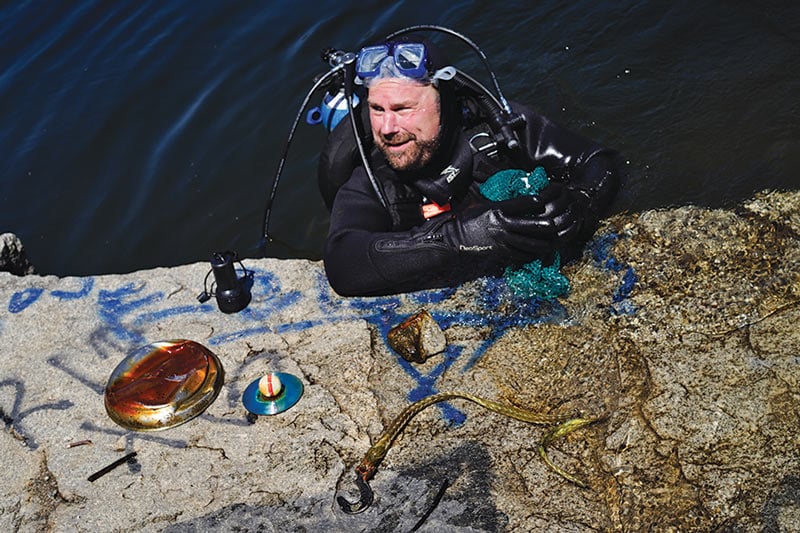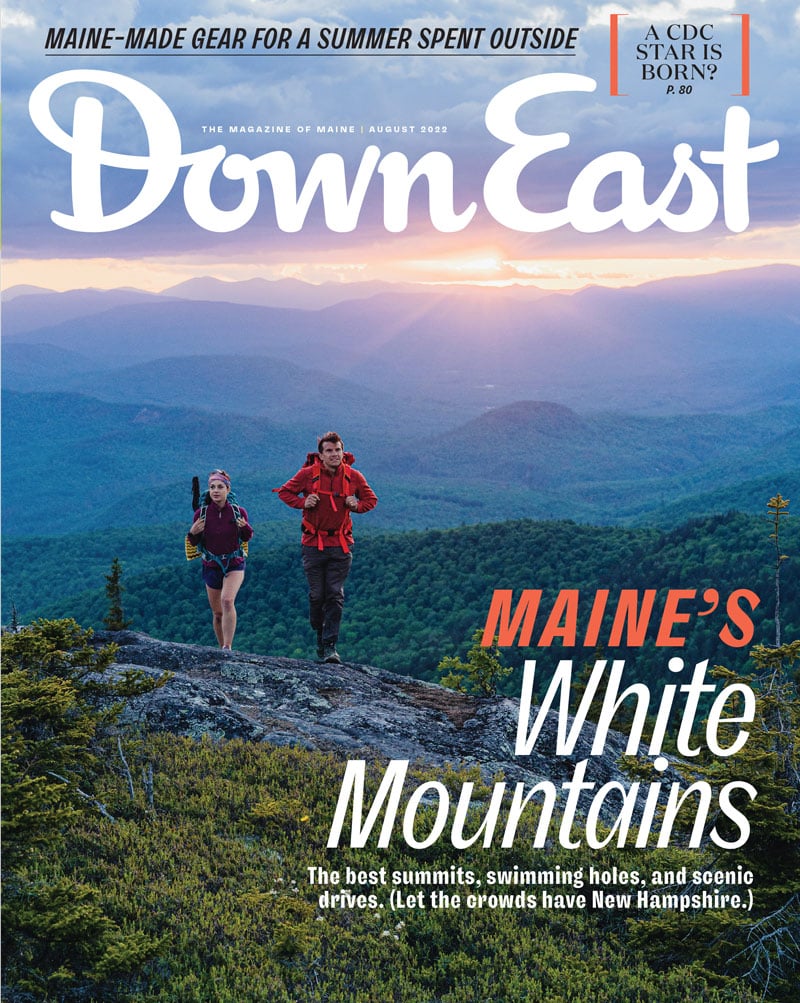By Michele Christle
Photographed by Dan Rajter
From our August 2022 issue
Blackflies and the sun were both out when a volunteer firefighter unlocked the gate marked “Enter at Own Risk” at a Mount Waldo trailhead, in Frankfort. Four scuba divers drove up the steep path, to minimize how far they’d each have to lug 35 pounds of gear. Once the way became impassable, they hoofed the remaining third of a mile, pausing to catch breath or rest a bad shoulder or knee. Rocks along the way had been tagged with graffiti: “Keep Going.” “Smile.” “Don’t die!”
The divers’ destination was a granite quarry that operated from the mid-1800s into the mid-1900s. After snowmelt was no longer pumped out every spring, the quarry turned into a popular spot for swimming and partying. It also developed a reputation as something of a black hole. People from nearby communities suspected it might hold vehicles, guns, maybe even a body or two — nothing concrete, just the stuff of local legend. When word spread about the planned dive, one resident posted on Facebook, “There are probably some pretty worried people whose secrets will be found out.”

At water’s edge, 58-year-old Chip Lagerbom set his oxygen tanks on a ledge strewn with peanut shells and broken glass. A history teacher at Belfast Area High School, Lagerbom had lately been giving students a firsthand view of the past by taking them on dives to a wreck in the Passagassawakeag River. He’s also the founder of the Mid-Coast Maine Aqua-Nuts, a loose network of scuba enthusiasts. Most of the group’s expeditions are in salt water, but Lagerbom has also led dives at Long Cove Quarry, in Tenants Harbor, where an Apple Watch and a Jeep were among the finds.
Nancy Snodgrass, a 28-year-old personal banker who drove up from her home in Windham, was first in the quarry. She dipped her long, curly brown hair underwater before tugging up her wet-suit hood. “Can someone help zip me up?” Lagerbom asked. Alex Doyne-Ditmas, a 22-year-old who studies ocean engineering at the University of Rhode Island and freelances as a commercial diver, lent him a hand. Paul Dyer, a 57-year-old tech entrepreneur from Hampden, was the last one in. A veteran of 3,200 skydives, he’d done a relatively paltry 60 scuba dives. “I’m just a neophyte,” he said, pulling his wet suit over the fish tattoo on his bicep. For all of them, the allure of the quarry was not knowing what they might turn up.



A family that had hiked up to the quarry eyed the divers with curiosity. “Is this a learning exercise, or are you looking for something?” the man asked.
“Just exploring,” Dyer answered.
“We guessed you were looking for a body.”
Knives on calves, headlamps strapped over hoods, GoPros on wrists, the divers descended, sending silver bubbles back to the surface. The water temperature, a balmy 73 degrees at the surface, dropped to 42 degrees at a depth of 30 feet. Visibility was murky, even with flashlights. Dyer emerged, plunking a green mesh bag on the ledge. His spoils: a golf ball, a Frisbee, a hooked rope, and a CD of Bob Seger’s greatest hits. Nancy popped up next, feeling around her head for algae-encrusted sunglasses.

Over several hours, the divers came across remnants of the old granite operation — a crane with a long wooden axle, cables, ropes. It was, Lagerbom said, “like regular work at the quarry just stopped one day and the water came and filled everything in, like it was suspended in time.” Thick sediment, hidey-holes, and the risk of tangling in cables prevented an exhaustive search, but scattered among the quarrying equipment were beer cans, a Converse sneaker, a Dockers boat shoe, swimsuits, tires, a Ford hubcap, a trailer, a car radio, a satellite dish, a bag of Doritos, and a still-sealed barrel. “There had been a niggling kind of creep factor going for me about what was in there or what it would be like,” Lagerbom said. “But once we were in the water and had descended, all that vanished. It kind of became a historical and cultural tour.”
The onlooking family had hung around to see what the divers dragged up. As they eventually wandered away, their attention turning to bullfrogs croaking among the rocks, the woman called back in a singsong voice, “Hope you find the body!”




